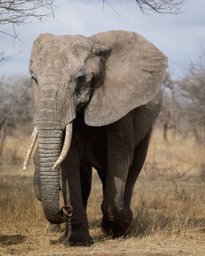THE SECRET KINSHIP OF HYRAX AND ELEPHANT
It often comes as a surprise to people that the humble hyrax, a creature no bigger than a rabbit, with twitchy whiskers and a habit of sunbathing on rocks, is bound by deep evolutionary history to the elephant. Yes, the elephant. One is small enough to curl up in your hands, the other can weigh more than a car. And yet, if you rewind the clock tens of millions of years, they share the same ancestor. It’s one of evolution’s great curveballs.For centuries, scientists tried to map out animal family trees using physical traits. That worked sometimes, but it was also a minefield. Some features evolve quickly, others hardly change at all, and it’s easy to be misled. Claws, for instance, can tell the wrong story. Genets have retractable claws like cats, but they’re actually civets. Meanwhile, cheetahs, true cats, have claws that don’t fully retract. Same feature, very different histories. This is what biologists call convergent evolution, when unrelated animals stumble upon the same design because it works.
To avoid being tricked, researchers started focusing on features that change very slowly, like bones or reproductive organs. That’s how they confidently grouped zebras, horses, and rhinos together, all of them walking on fused toes, and the fossil record shows their three-toed ancestors.
In Africa, a particularly fascinating story comes from a group of mammals called the Afrotherians. Between about 105 and 40 million years ago, Africa was an island continent, cut off from the rest of the world. While isolated, its mammals branched into a dizzying array of forms. Some became insect-eaters, like elephant shrews and golden moles. Others specialized, like the aardvark with its termite diet. And one lineage split into three odd cousins, namely, elephants, hyraxes, and sea cows such as dugongs and manatees. Look closely at their skeletons, or even their placentas, and the family resemblance begins to show.
At first glance, though, the hyrax-elephant connection feels almost comical. Hyraxes chirp and scurry like rodents, while elephants trumpet and reshape entire landscapes. Even their stomachs are built differently. A hyrax digests plants more like a zebra than an elephant. And yet DNA, the most reliable record keeper, confirms their link. Both hyraxes and elephants trace back to a shared ancestor around 65 to 70 million years ago. Some genetic studies even suggest elephants are closer to dugongs than to hyraxes, which only adds to the weirdness.
But here’s an important point, when scientists say “hyraxes are related to elephants,” they don’t mean elephants are the hyrax’s closest living kin. For a rock hyrax, the closest relatives are other hyrax species. For an African elephant, the closest kin are forest elephants, then Asian elephants, and then extinct cousins like mammoths. Hyraxes and elephants are more like distant relatives at a family reunion, they may not look alike anymore, but the DNA is there to prove the shared bloodline.
Many hyrax species once roamed Africa, but they faded as rodents, hares, and antelope spread. Elephants, with their size and adaptability, managed to persist. Today, the sight of a hyrax basking on a rock and an elephant roaming the savanna hides the same underlying truth, they are both products of Africa’s long evolutionary isolation, members of a hidden family called Afrotheria.
It’s a reminder that nature doesn’t always tell its stories on the surface. Sometimes the tiniest creatures carry the oldest secrets, and even the mightiest of animals share their roots with the unassuming ones we’re likely to overlook. The next time you watch a hyrax dart between boulders or hear an elephant rumble through the bush, you’re seeing two very different chapters of the same ancient book.








